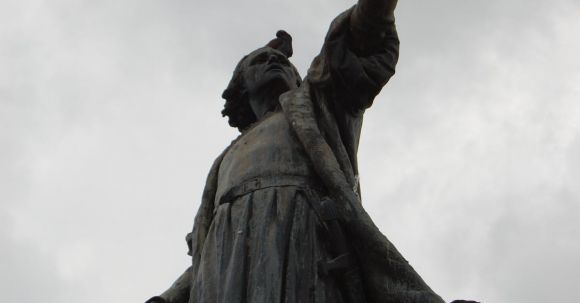The discovery of the New World by Christopher Columbus in 1492 was a monumental event that forever changed the course of history. But what factors led to this historic journey? In this article, we will explore the motivations, technological advancements, and political climate that played a crucial role in Columbus’s voyage.
Motivations: The Search for Wealth and Glory
One of the primary motivations behind Columbus’s expedition was the pursuit of wealth and glory. During the 15th century, Europe was experiencing a period of intense exploration, driven by the desire to find new trade routes to Asia. Columbus, a skilled navigator from Genoa, Italy, believed that he could reach Asia by sailing westward across the Atlantic Ocean. By doing so, he hoped to bypass the long and treacherous journey around Africa, which was controlled by rival powers.
Technological Advancements: The Age of Discovery
The 15th century witnessed significant advancements in navigation and shipbuilding technology, which made long-distance voyages more feasible. The invention of the astrolabe, a device used to measure the angle of the sun or stars above the horizon, allowed sailors to determine their latitude accurately. Additionally, the development of the caravel, a small and maneuverable ship with a triangular lateen sail, enabled sailors to navigate more effectively against the wind. These technological innovations provided Columbus with the tools necessary to embark on his ambitious voyage.
Political Climate: The Rise of Maritime Empires
The political climate of the time also played a crucial role in Columbus’s journey. Europe was experiencing a period of intense competition among emerging maritime empires. Spain and Portugal, in particular, were vying for dominance in global trade and exploration. In 1492, Columbus convinced Queen Isabella of Castile and King Ferdinand of Aragon to sponsor his expedition. Their support was crucial, as it provided Columbus with the necessary funds and resources to undertake his ambitious voyage. By finding a new trade route to Asia, Columbus hoped to secure Spain’s position as a leading maritime power.
The Voyage: From Europe to the New World
On August 3, 1492, Columbus set sail from Palos de la Frontera, Spain, with a crew of 90 men and three ships—the Santa Maria, the Pinta, and the Niña. After a long and arduous journey, on October 12, 1492, land was sighted. Columbus had reached the Bahamas, a group of islands in the Caribbean Sea. Although he believed he had reached the outskirts of Asia, his discovery marked the beginning of the European colonization of the Americas.
The Aftermath: A New Era of Exploration and Conquest
Columbus’s discovery of the New World had far-reaching consequences. It opened up a new era of exploration, colonization, and conquest. Other European powers, such as England, France, and the Netherlands, quickly followed suit, establishing colonies in the Americas. The indigenous populations of the New World were profoundly affected, as European diseases, forced labor, and land seizures led to the decimation of many Native American cultures.
In conclusion, several factors led to Christopher Columbus’s discovery of the New World. Motivated by wealth and glory, he embarked on a journey that was made possible by advancements in navigational technology and the political climate of the time. His voyage not only marked the beginning of European colonization in the Americas but also set the stage for centuries of exploration and conquest. The impact of Columbus’s discovery continues to shape the world we live in today.





